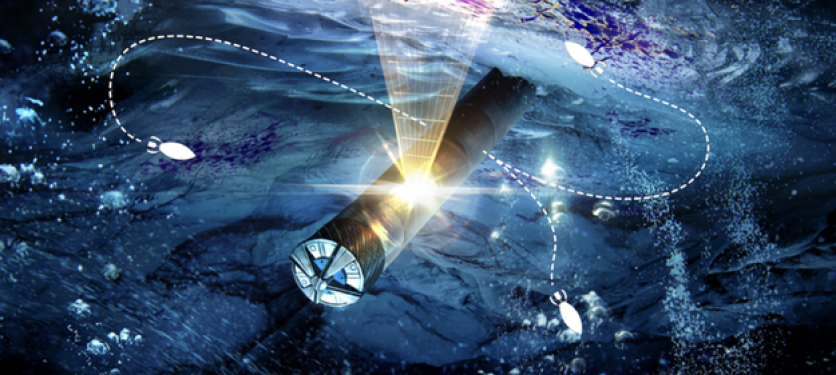NASA awarded a contract to a NIAC project in its Phase I studies regarding a swarm of swimming robots that would take a deep dive on Jupiter's Europa moon to look for signs of life in the cold waters of the satellite. This off-world mission will help determine any other mysteries that the universe keeps secret to know more about the space around us.
NASA Swimming Robots to Detect Life on Jupiter's Europa

NASA and its Jet Propulsion Laboratory (JPL) recently awarded Ethan Schaler (via SciTechDaily) a Phase II funding for the project known as "Sensing with Independent Micro-swimmers" (SWIM), which aims to look for life off-world. The small, swarming, and swimming robots would help in getting more information about places that humans and massive robots cannot reach, and it is the icy moon's waters.
NIAC's selected research for bringing advancements to space travel and discovering more of the systems around us previously awarded Schaler's SWIM a Phase I funding of $125,000 to develop the robot models and prototypes. Now, Schaler is seeing a Phase II funding of $600,000 to develop a working model, with the devices able to endure Europa's harsh, cold weather.
Read Also : Jupiter Wields High Metal Contractions That Could Indicate Its Origins, Researchers Find
NASA SWIM to Develop Soon for More Explorations
NASA JPL and Schaler are now on their way to developing the said robots, and it aims to bring more to the public's knowledge of Europa, particularly with potential life from underneath its waters. The micro-swimmers would dive into its cold waters for their explorations, and it will help answer questions regarding a theory on Jupiter's moon.
NASA's Quest for the Europa
NASA has a massive interest in looking into Jupiter's icy moon, the Europa, and it aims to conduct a study that will help discover more of the natural satellite orbiting the gas giant. The Europa Clipper mission has been on track since 2020, and it will bring the world a new focus on the icy moon that will launch by October 2024 to survey the space object.
There are other missions already active in Jupiter's region, and one is the Juno spacecraft that aims to bring the world information about the gigantic planet next to Mars. The Juno once captured audio from the Ganymede, the largest moon of Jupiter and the Solar System, and it brought a faint sound for the researchers to discover many things about it.
Jupiter is the giant planet in the Solar System, and it has its dedicated studies will help in understanding more of the gas world for people to understand and discover. Apart from its origins and existence, one of the studies aims to know more if it has signs of life underneath its icy surface, with the SWIM robots taking a dive for NASA.
Related Article : Hubble Space Telescope Data Led SwRI Scientists to Sulfur Residue on Jupiter's Europa
This article is owned by TechTimes
Written by Isaiah Richard
![Apple Watch Series 10 [GPS 42mm]](https://d.techtimes.com/en/full/453899/apple-watch-series-10-gps-42mm.jpg?w=184&h=103&f=9fb3c2ea2db928c663d1d2eadbcb3e52)



